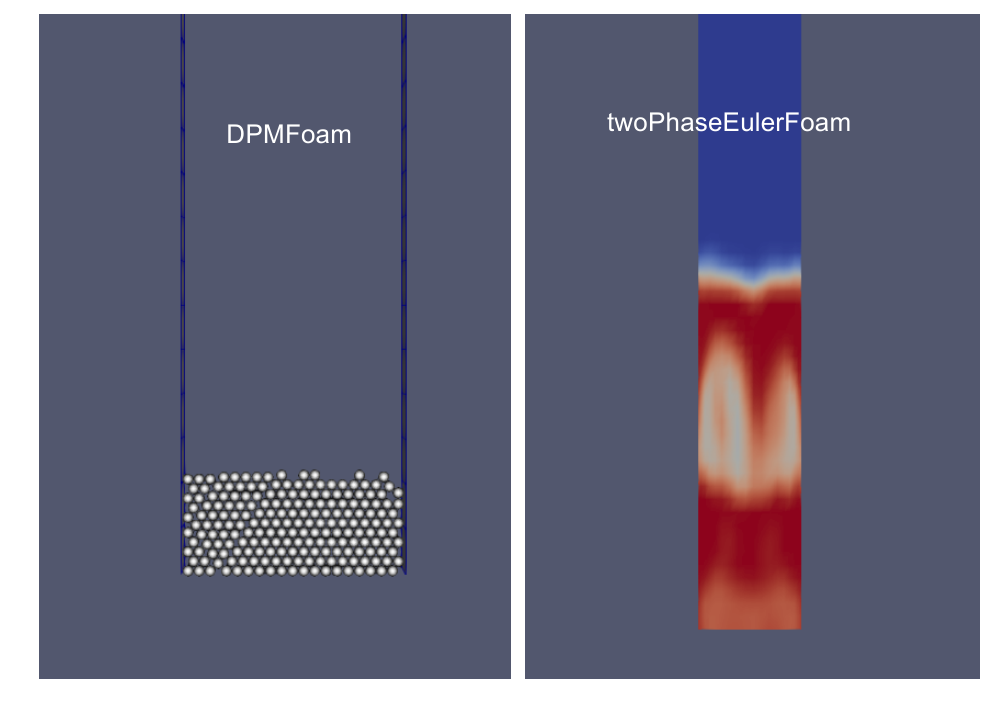DPMFoam和twoPhaseEulerFoam颗粒流化
-
各位大佬,求助有关颗粒流态化的两个求解器的对比。
先描述一下计算过程:二维流化床,10mmx1000mm,来流速度为0.4m/s,气相密度0.446kg/m3,粘性系数0.0000412Pa·s,颗粒相密度4000kg/m3,直径0.5mm,曳力模型采用WenYu。
遇到的问题是采用twoPhaseEulerFoam时颗粒是可以流化的,而采用DPMFoam时颗粒基本不动,如图所示。

初步怀疑是lagrangian方法的曳力求解有问题,但是仔细看了代码,又按照自己的逻辑写了一遍,DPMFoam求解颗粒还是不动。
请问各位大佬,有遇到这种问题的吗?有解决方案吗?非常感谢! -
@李东岳 @星星星星晴 @zhouxu
各位大佬,问题基本解决了,需要关闭kineticCloudProperties中的cellValueSourceCorrection选项。
我在之前气固反应模型添加过程中借鉴了reactingParcelFoam和coalChemistryFoam的内容,计算中开启了cellValueSourceCorrection选项,其计算过程为template<class ParcelType> template<class TrackCloudType> void Foam::KinematicParcel<ParcelType>::cellValueSourceCorrection ( TrackCloudType& cloud, trackingData& td, const scalar dt ) { td.Uc() += cloud.UTrans()[this->cell()]/massCell(td); }我在网上找了一个解答链接文本https://bugs.openfoam.org/view.php?id=2199
2. Normally during the particle iteration the continuous phase properties are frozen and the momentum sources from particles are applied to the next fluid solution. If cellValueSourceCorrection is true, the continuous phase properties are modified already after each particle time-step to roughly take into account the coupling from the particles to the fluid. This can be sometimes beneficial, but it can also cause numerical problems as there is no under-relaxation applied.
供各位参考。

